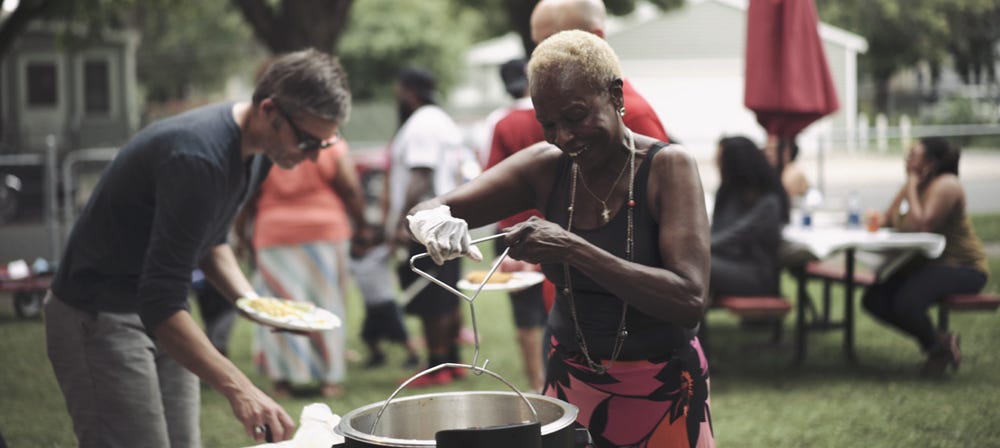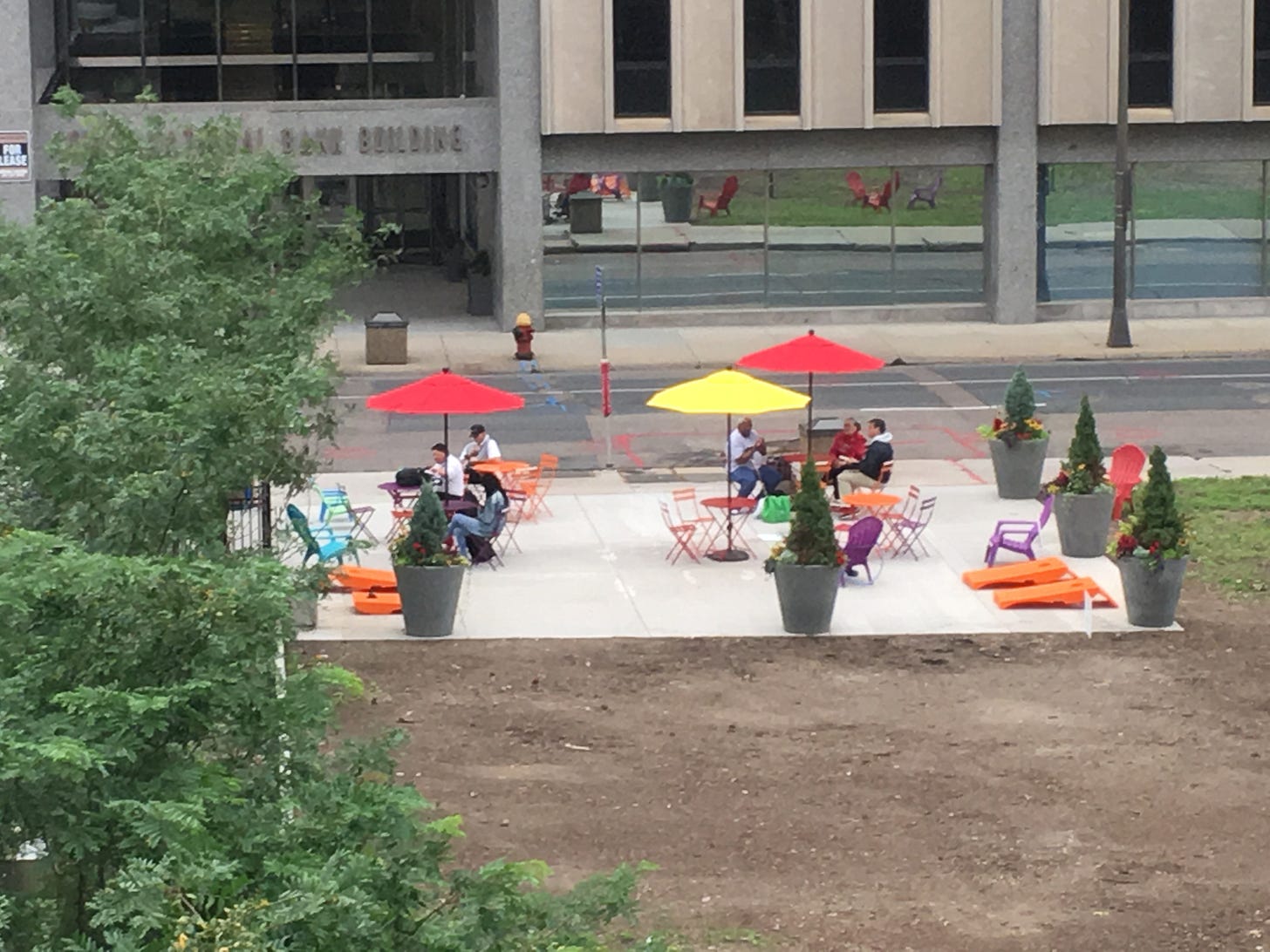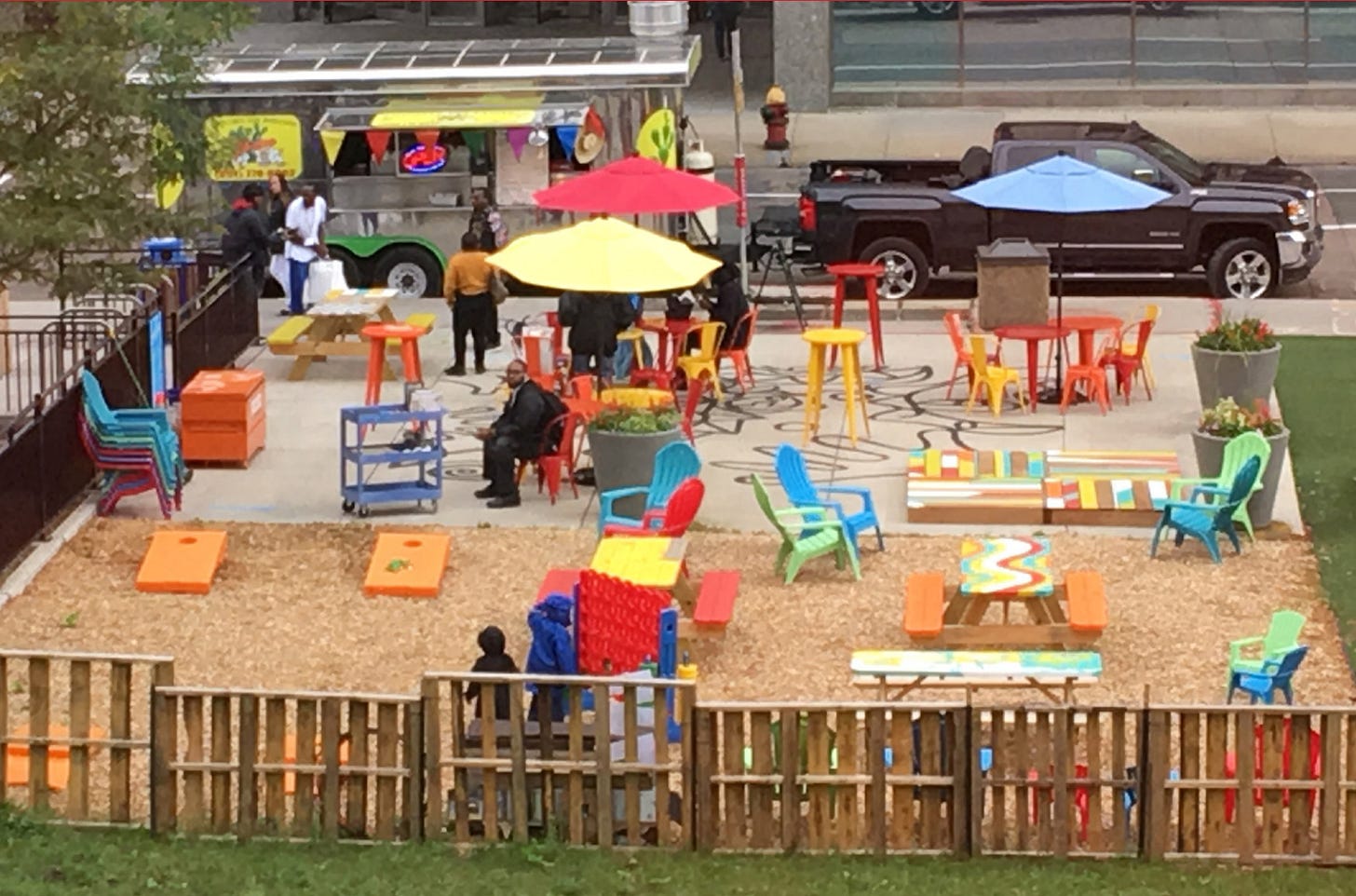You Have Enough To Start Right Now: Reframing Your Resources
Step 2 of Transforming a Place Without Money or Authority
This newsletter is part 3 of a series on our seven-step placemaking process (what we like to call "how to get things done without a lot of money or authority"). If you missed the last part to this series, you can check it out here!
"We'd love to do that, but we don't have enough money."
How often do we hear (or say!) that when we set out to improve their public spaces? It’s a familiar roadblock to anyone trying to make change in their community.
However, as with so many challenges, the obstacle is the way.
Sure, big projects carry a big price tag. But consider that: (a) maybe the project doesn't have to achieve its fullest expression or size on the first step, and (b) money is never the only resource available to you.
Consider the possibility that your project and place may be better off without getting all of your desired funding right away.
Instead of asking, "Where will we find the money?" ask, "What do we already have to work with and how can we leverage it to generate momentum?"
You already have what you need to start making progress right now!
More Money = More Problems
There's no denying that it's exciting when you get a big influx of cash for a project. However, a big check from someone else almost invariably comes with their strings attached. Public agencies, foundations, and investors typically require extensive reporting, rigid repayment terms, limitations on how you can use the funds you're given — or all three! In other words, it creates rigidity, which makes it difficult to experiment in a low-risk way. Figuring out what works takes time: real learning requires taking small steps, some of which might fail, and then adjusting your approach accordingly. More rigidity will inevitably make the discovery process harder.
On the other hand, while starting with less money can feel daunting, it actually provides more flexibility. Less money from others means less intrusion from outside interests and from those who are more concerned about not being seen as screwing up, rather than trying as hard as they can to make something good happen.
Not to mention, it forces people to be more intentional about discovering what resources they already have in their community. Working with what you already have in hand builds up the belief within communities that they can solve their own problems and don’t need to wait for some outside savior.
In my work with dozens of low-resourced, small-town main streets in particular, this was the #1 factor that determined the health of a downtown: did the community believe that they deserved and could create nice things for themselves?
Moreover, when communities wait to act because they think they don't have enough cash yet to get started, projects stall out and spaces that could be more productive just sit idly, sometimes for years. It's far better to start with what you have now and set improvements in motion that can build over time, activating the space rather than letting it stagnate.
The final lesson is that nothing sells like success. What is most important is that you get a runway long enough to figure out what works. The more you figure that out, the more resources will come to you, rather than the other way around. When resources come your way, you get to dictate more of the terms, thus overcoming the trap of more money = more problems (i.e., rigidity).
Beyond Just Money: Harnessing Capacity Everywhere
More than money, what we really need is capacity for action, with direct funding being but one type. What else is available to be harnessed in support of a project or place?
Spending power: When people spend their money in the day-to-day operations of a space (buying food, visiting shops, etc.) that economic activity is a resource that can be reutilized or redirected into improvements.
The actions people take: How people visit, conduct their operations in, or tell other people about a place can impact how it's perceived and used.
Physical contributions: Why purchase all-new things to fill a space when you could have members of the community contribute or donate to it?
All of these are possible through relationships. Cultivating and working through relationships allows you to identify and shift the previously untapped and unnoticed resources in your community.
You may be reading this and thinking, "Okay, but how useful can these things actually be, compared to cold, hard cash?" Don't underestimate what can be accomplished with a group of invested, motivated people and some creativity! Remember, it’s all about creating the snowball that can grow — no matter how small it starts — rather than trying to build the giant snowman all at once.
Let's look at some real-life examples from our own work in St. Paul, Minnesota:
The Friendly Front Yard Program: Maximizing Microgrants
This project provided microgrants to households to transform their front yards into hubs of social life. The grants truly were micro, no more than $250, so it wasn't the money alone that enabled the transformation. Instead, it was people getting crafty with what they already had, pulling out old stuff they were storing in their basements or backyards, and simply rearranging it differently by moving it to the front yard in fun and inviting ways. The result? Participants were able to meet on average five new neighbors through modest funding, existing items, and training on how to see their front yards in a new light.
Kellogg Mall Park: Creating Safety in Numbers
This is a great example of how people's actions can become a resource. In the interest of making this park feel safer for visitors, a dog park was installed to attract dog owners. This dog-friendly space not only made the park more attractive for pet owners, but it also meant that other visitors (especially women, children, and older people) felt safer thanks to the presence of the dog walkers — it meant there were almost always "eyes on the street."
Central Station: Small Changes, Big Difference
As noted in the last installment of this series, there was unsafe activity going on at Central Station in St. Paul, Minnesota, due to its proximity to a vacant lot. This made people feel wary when using the transit stop.
We secured money and crafted a grand vision for a food truck court at Central Station. After months of working our way through approvals, we were denied based on an interpretation of accessibility laws that prevented anything other than a fully built-out space that was beyond our resources.
With summertime almost over, we kicked into gear and were able to implement a slimmed-down activation of the space: a 1,000 ft. plaza with some movable seating, planters, lawn games, and weekly concerts. Spanning only six weeks, the project provided proof of concept and generated new resources to expand the effort the following summer:
a 4x increase in the size of the plaza,
a dedicated onsite ambassador,
three weekly events, and
loads more seating and activities for three months.
In all of these examples, we didn't need a financial windfall to make changes: we just needed to think about the relationships we had and what resources could be garnered from them based on achieving shared success. And, we kept in mind that we were playing a multiple-turn, or an infinite-turn, game — not a one-shot or finite ordeal. (We’ll talk more about this in a future post!)
Those who work in functional silos miss latent opportunities that are all around us because their focus is dictated by their assigned task, and they thus don't have the incentive to build connections outside of their scope. You can't afford to work in a silo.
We guarantee your community has hidden assets and people who are willing to contribute; you just have to look for them. Once you've identified them, it's then time to create your constituency — which we'll talk about in the next part of this series.





